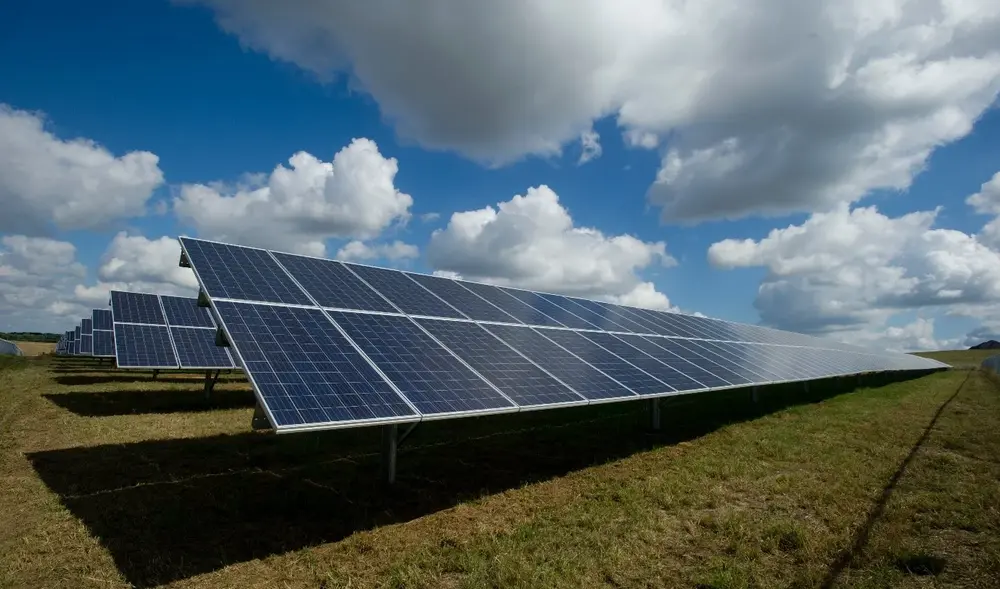Harvesting Solar Power: A Comparative Analysis of Solar Energy Capacity in India and Brazil

The spotlight is firmly on solar power as a beacon of hope for sustainable energy worldwide. In this pursuit, India and Brazil have emerged as key players, demonstrating significant advancements in their solar energy capacity. Despite their shared economic standing and favourable geographical conditions, India has surged ahead, producing nearly four times the solar power of Brazil. This substantial disparity has prompted an in-depth analysis of the institutional frameworks and policies that have shaped the divergent trajectories of solar energy adoption in these two prominent emerging economies.
Comparative Analysis of Solar Energy Capacity in India and Brazil
Both nations have set high goals for the deployment of solar energy, demonstrating their dedication to the production of sustainable energy. However, India is determined to become a global leader in the production of renewable energy, as evidenced by the National Solar Mission (NSM) which intends to reach 100 GW of solar power by 2022. With a goal of 90 GW of solar power by 2050, Brazil has additionally shown a strong commitment to solar energy, indicating its desire to diversify its energy mix and lessen its dependency on conventional energy sources.
However, India and Brazil also face the unique challenge of industrializing while reducing carbon emissions, necessitating strategic and effective policies for sustainable development. India, previously reliant on coal, has strategically redirected its focus towards supporting solar and wind energy innovation, implementing several policies and initiatives to facilitate the widespread adoption of renewable energy. In contrast, Brazil, historically emphasizing hydropower and biofuels, has gradually transitioned its attention towards solar and wind energy, spurred by significant findings from the "Solar and Wind Energy Resource Assessment" project.
The comparative analysis of the solar energy capacity in India and Brazil adopts an institutional framework, providing a comprehensive understanding of the factors shaping the divergent outcomes of their energy transitions. By examining important factors, the study explains the different strategies adopted by Brazil and India and provides insightful policy recommendations for the wider implementation of solar energy in both countries.
Even though both nations' attempts to promote renewable energy have advanced admirably, putting photovoltaic solar energy projects into action presents particular difficulties. Brazil's efforts to establish new solar projects are hampered by issues like financial resources, a lack of comprehensive education, and restricted access to permits data. On the other hand, India grapples with the need for technological advancements, streamlined policy implementation, and improved coordination among its various government agencies to sustain and accelerate its current growth trajectory in solar energy production.
Institutional Frameworks and Policies Shaping Solar Energy Adoption
India's institutional framework has actively encouraged and supported the use of solar energy, fostering an environment conducive to the growth of renewable energy. The Electricity Act of 2003 was a critical turning point, providing advantageous pricing and quotas for businesses and individuals utilizing renewable energy sources. The remarkable rise in solar energy generation in India can be attributed to the policies and activities that followed, all of which were made possible by this legislation. Nationwide adoption of solar energy has been greatly aided by initiatives like the National Solar Mission (NSM) and the Generation-Based Incentive (GBI).
However, a more gradual shift towards solar and wind energy has resulted from Brazil's historical concentration on hydropower and biofuels. With the "Solar and Wind Energy Resource Assessment" (SWERA) project, the nation has demonstrated a recent shift in focus; yet, rules created expressly for solar efforts have been comparatively few. Hydropower has always been given precedence in Brazil's energy landscape, with the solar and wind industries obtaining less funding and attention than other renewable energy sources.
Even though Brazil and India have made great progress in their individual solar energy projects, they still have obstacles to overcome that call for careful consideration and calculated planning. In Brazil, the development of photovoltaic solar energy projects is hindered by a lack of comprehensive education, financial resources, and access to permitting data. Addressing these challenges will require a concerted effort to enhance data accessibility, promote technology awareness, and establish a supportive foundation for solar energy adoption.
In India, technological advancements, streamlined policy implementation, and improved coordination among government agencies are crucial for sustaining and accelerating the country's solar energy growth. Investing in research and innovation for solar technology, ensuring effective policy compliance and implementation, attracting foreign investments, and consolidating state policies are essential steps that India must take to overcome its current challenges in solar energy deployment.
Conclusion
To address these challenges, Brazil must prioritize establishing a supportive foundation, enhancing data accessibility, and promoting widespread technology awareness. The development of photovoltaic technology in the nation will be greatly aided by increasing government assistance, encouraging network collaboration, and facilitating technology transfer. To fully realise the potential of its solar energy projects, India too needs to engage in technology development, make sure that policies are implemented effectively, draw in international capital, and improve coordination between government agencies.
The world can learn a lot from India's and Brazil's experiences as they continue to work through the challenges of adopting solar energy. Collaboration and information exchange between these two nations have the potential to accelerate the switch to sustainable energy sources and significantly aid in the global effort to combat climate change. India and Brazil can lead the way towards a more sustainable and environmentally friendly future by exchanging strategies and challenges and encouraging global collaboration in the fight against environmental degradation.
The comparative study of solar energy capacity between Brazil and India concludes by highlighting the critical influence of institutional frameworks and policies on the adoption trajectory of renewable energy. Despite the fact that both nations confront unique difficulties, their bold goals and commitment to sustainable energy production show how committed they are to reducing global warming and promoting a more ecologically friendly future. By means of sustained cooperation and exchange of knowledge, Brazil and India have the potential to take the lead in the worldwide shift towards renewable energy, thereby serving as role models for other countries striving for a more ecologically conscious and sustainable world.

Aditi Tyagi is a MPP student at the Willy Brandt School of Public Policy. Aditi's area of interest are energy policy and transition. Previously, Aditi has worked in the fields of education and animal welfare.
~ The views represented in this blog post do not necessarily represent those of the Brandt School. ~